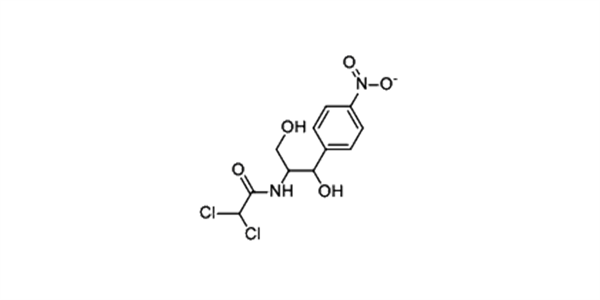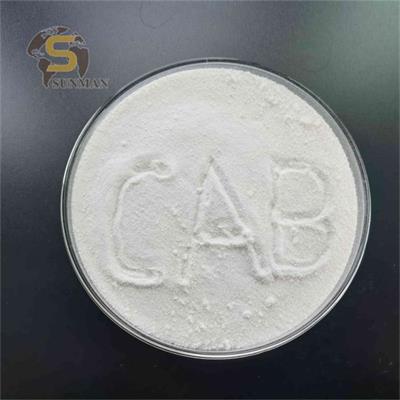ąÉčåąĄčéą░čé ą▒čāčéąĖčĆą░čéčŗ čåąĄą╗ą╗čÄą╗ąŠąĘčŗ ąśčüčéą╝ą░ąĮą░ (
ąóąÉąÜąĪąś
) ą┐čĆąĄą┤čüčéą░ą▓ą╗čÅčÄčé čüąŠą▒ąŠą╣ čüą╝ąĄčłą░ąĮąĮčŗąĄ čŹčäąĖčĆčŗ čåąĄą╗ą╗čÄą╗ąŠąĘčŗ, čüąŠą┤ąĄčƹȹ░čēąĖąĄ ą░čåąĄčéą░čéąĮčŗąĄ ąĖ ą▒čāčéąĖčĆą░čéąĮčŗąĄ čäčāąĮą║čåąĖąŠąĮą░ą╗čīąĮčŗąĄ ą│čĆčāą┐ą┐čŗ. ą×ąĮąĖ čłąĖčĆąŠą║ąŠ ąĖčüą┐ąŠą╗čīąĘčāčÄčéčüčÅ ą▓ ą║ą░č湥čüčéą▓ąĄ č鹥čĆą╝ąŠą┐ą╗ą░čüčéąĖčćąĮčŗčģ čüą▓čÅąĘčāčÄčēąĖčģ ąĖ ą┤ąŠą▒ą░ą▓ąŠą║ ą▓ ą┐ąŠą║čĆčŗčéąĖčÅčģ ą┤ą╗čÅ čĆą░ąĘą╗ąĖčćąĮčŗčģ ą╝ą░č鹥čĆąĖą░ą╗ąŠą▓, ą▓ą║ą╗čÄčćą░čÅ ą┐ą╗ą░čüčéąĖą║ąĖ, č鹥ą║čüčéąĖą╗čī, ą╝ąĄčéą░ą╗ą╗, ą║ąŠąČčā ąĖ ą┤čĆąĄą▓ąĄčüąĖąĮčā. ąæąŠą╗čīčłąĖąĮčüčéą▓ąŠ ą┐čĆąŠą┤čāą║č鹊ą▓ Eastman
ą░čåąĄčéą░čé ą▒čāčéąĖčĆą░čé čåąĄą╗ą╗čÄą╗ąŠąĘčŗ
ą╝ą░čĆą║ąĖ čĆą░čüčéą▓ąŠčĆąĖą╝čŗ ą▓ ąĮąĄčüą║ąŠą╗čīą║ąĖčģ ąĮąĄą┤ąŠčĆąŠą│ąĖčģ čĆą░čüčéą▓ąŠčĆąĖč鹥ą╗čÅčģ ąĖ čüąŠą▓ą╝ąĄčüčéąĖą╝čŗ čü čłąĖčĆąŠą║ąĖą╝ čüą┐ąĄą║čéčĆąŠą╝ čüą╝ąŠą╗ ąĖ ą┐ąĖą│ą╝ąĄąĮč鹊ą▓.

ąÜą╗čÄč湥ą▓čŗąĄ čüą▓ąŠą╣čüčéą▓ą░:
ą¤čĆąŠąĘčĆą░čćąĮąŠčüčéčī: CAB ą┐čĆąŠąĘčĆą░č湥ąĮ ąĖ ą│ą╗čÅąĮčåąĄą▓, čćč鹊 ą┤ąĄą╗ą░ąĄčé ąĄą│ąŠ ą┐ąŠą┤čģąŠą┤čÅčēąĖą╝ ą┤ą╗čÅ ą┐čĆąĖą╝ąĄąĮąĄąĮąĖą╣, čéčĆąĄą▒čāčÄčēąĖčģ ąŠą┐čéąĖč湥čüą║ąŠą╣ ą┐čĆąŠąĘčĆą░čćąĮąŠčüčéąĖ. CAB čüąŠčģčĆą░ąĮčÅąĄčé čüą▓ąŠąĖ ąŠą┐čéąĖč湥čüą║ąĖąĄ čüą▓ąŠą╣čüčéą▓ą░ ą┤ą░ąČąĄ ą▓ čüčāčĆąŠą▓čŗčģ čāčüą╗ąŠą▓ąĖčÅčģ, čćč鹊 ą┤ąĄą╗ą░ąĄčé ąĄą│ąŠ ąĖą┤ąĄą░ą╗čīąĮčŗą╝ ą╝ą░č鹥čĆąĖą░ą╗ąŠą╝ ą┤ą╗čÅ ą┐čĆąĖą╝ąĄąĮąĄąĮąĖą╣, ą│ą┤ąĄ ą┐čĆąŠąĘčĆą░čćąĮąŠčüčéčī ąĖą╝ąĄąĄčé čĆąĄčłą░čÄčēąĄąĄ ąĘąĮą░č湥ąĮąĖąĄ.
ąöąŠą╗ą│ąŠą▓ąĄčćąĮąŠčüčéčī: ąŠąĮ ą┐čĆąŠčćąĮčŗą╣ ąĖ čāčüč鹊ą╣čćąĖą▓ ą║ čāą┤ą░čĆą░ą╝, čåą░čĆą░ą┐ąĖąĮą░ą╝ ąĖ ąĖąĘąĮąŠčüčā. CAB ąŠą▒ą╗ą░ą┤ą░ąĄčé čģąŠčĆąŠčłąĖą╝ąĖ ą╝ąĄčģą░ąĮąĖč湥čüą║ąĖą╝ąĖ čüą▓ąŠą╣čüčéą▓ą░ą╝ąĖ, čéą░ą║ąĖą╝ąĖ ą║ą░ą║ ą│ąĖą▒ą║ąŠčüčéčī ąĖ čāą┤ą░čĆąŠą┐čĆąŠčćąĮąŠčüčéčī, ą║ąŠč鹊čĆčŗąĄ čåąĄąĮąĮčŗ ą┤ą╗čÅ čłąĖčĆąŠą║ąŠą│ąŠ čüą┐ąĄą║čéčĆą░ ą┐čĆąŠą╝čŗčłą╗ąĄąĮąĮčŗčģ ą┐čĆąĖą╝ąĄąĮąĄąĮąĖą╣.
ąŻčüč鹊ą╣čćąĖą▓ąŠčüčéčī ą║ ą░čéą╝ąŠčüč乥čĆąĮčŗą╝ ą▓ąŠąĘą┤ąĄą╣čüčéą▓ąĖčÅą╝: ą┤ąĄą╝ąŠąĮčüčéčĆąĖčĆčāąĄčé čģąŠčĆąŠčłčāčÄ čüčéą░ą▒ąĖą╗čīąĮąŠčüčéčī ą┐ąŠą┤ ą▓ąŠąĘą┤ąĄą╣čüčéą▓ąĖąĄą╝ čāą╗čīčéčĆą░čäąĖąŠą╗ąĄčéą░ ąĖ ą┐čĆąŠčéąĖą▓ąŠčüč鹊ąĖčé čĆą░ąĘčĆčāčłąĄąĮąĖčÄ, ą▓čŗąĘą▓ą░ąĮąĮąŠą╝čā ą┐ąŠą│ąŠą┤ąĮčŗą╝ąĖ čāčüą╗ąŠą▓ąĖčÅą╝ąĖ.
ąźąĖą╝ąĖč湥čüą║ą░čÅ čüč鹊ą╣ą║ąŠčüčéčī: CAB čāčüč鹊ą╣čćąĖą▓ ą║ ą▓ąŠąĘą┤ąĄą╣čüčéą▓ąĖčÄ ą▓ąŠą┤čŗ, ą╝ą░čüąĄą╗ ąĖ ą╝ąĮąŠą│ąĖčģ čĆą░čüčéą▓ąŠčĆąĖč鹥ą╗ąĄą╣. ą£ą░č鹥čĆąĖą░ą╗ čāčüč鹊ą╣čćąĖą▓ ą║ ą▓ąŠąĘą┤ąĄą╣čüčéą▓ąĖčÄ čģąĖą╝ąĖą║ą░č鹊ą▓ ąĖ ą▓ą╗ą░ą│ąĖ, čćč鹊 ąŠą▒ąĄčüą┐ąĄčćąĖą▓ą░ąĄčé ąĄą│ąŠ ą┤ąŠą╗ą│ąŠą▓ąĄčćąĮąŠčüčéčī ą▓ čĆą░ąĘą╗ąĖčćąĮčŗčģ ąĖąĘą┤ąĄą╗ąĖčÅčģ.
ąÉą┤ą│ąĄąĘąĖčÅ ąĖ ą┐ąŠą║čĆčŗčéąĖąĄ: ąŠą▒ą╗ą░ą┤ą░ąĄčé ą┐čĆąĄą▓ąŠčüčģąŠą┤ąĮąŠą╣ ą░ą┤ą│ąĄąĘąĖąĄą╣ ą║ čĆą░ąĘą╗ąĖčćąĮčŗą╝ ą┐ąŠą▓ąĄčĆčģąĮąŠčüčéčÅą╝ ąĖ čłąĖčĆąŠą║ąŠ ąĖčüą┐ąŠą╗čīąĘčāąĄčéčüčÅ ą▓ ą┐ąŠą║čĆčŗčéąĖčÅčģ ąĖ ą╗ą░ą║ą░čģ.
CAB ą┐čĆąĄą┤čüčéą░ą▓ą╗čÅąĄčé čüąŠą▒ąŠą╣ ą┐ąŠčĆąŠčłąŠą║, ą╗ąĄą│ą║ąŠ čĆą░čüčéą▓ąŠčĆčÅąĄčéčüčÅ ą▓ čłąĖčĆąŠą║ąŠą╝ čüą┐ąĄą║čéčĆąĄ ąŠą▒čŗčćąĮčŗčģ čĆą░čüčéą▓ąŠčĆąĖč鹥ą╗ąĄą╣ ąĖ ą┤ąĄą╝ąŠąĮčüčéčĆąĖčĆčāąĄčé čģąŠčĆąŠčłčāčÄ čüąŠą▓ą╝ąĄčüčéąĖą╝ąŠčüčéčī čüąŠ ą╝ąĮąŠą│ąĖą╝ąĖ ą┤čĆčāą│ąĖą╝ąĖ čüą╝ąŠą╗ą░ą╝ąĖ.
ąÆ čåąĄą╗ąŠą╝ CAB ŌĆö čŹč鹊 ą╗ąĄą│ą║ąŠ ą░ą┤ą░ą┐čéąĖčĆčāąĄą╝čŗą╣ ą╝ą░č鹥čĆąĖą░ą╗, ąĖčüą┐ąŠą╗čīąĘčāąĄą╝čŗą╣ ą▓ čĆą░ąĘą╗ąĖčćąĮčŗčģ ąŠčéčĆą░čüą╗čÅčģ ą┐čĆąŠą╝čŗčłą╗ąĄąĮąĮąŠčüčéąĖ ą┤ą╗čÅ ą┐čĆąĖą╝ąĄąĮąĄąĮąĖą╣, čéčĆąĄą▒čāčÄčēąĖčģ ą┤ąŠą╗ą│ąŠą▓ąĄčćąĮąŠčüčéąĖ, ą┐čĆąŠąĘčĆą░čćąĮąŠčüčéąĖ ąĖ čāčüč鹊ą╣čćąĖą▓ąŠčüčéąĖ ą║ čäą░ą║č鹊čĆą░ą╝ ąŠą║čĆčāąČą░čÄčēąĄą╣ čüčĆąĄą┤čŗ.

ąĀą░čüą┐čĆąŠčüčéčĆą░ąĮąĄąĮąĮčŗąĄ ą┐čĆąĖą╝ąĄąĮąĄąĮąĖčÅ:
ą¤ąŠą║čĆčŗčéąĖčÅ ąĖ ą║čĆą░čüą║ąĖ:
CAB čćą░čüč鹊 ąĖčüą┐ąŠą╗čīąĘčāąĄčéčüčÅ ą▓ ą║ą░č湥čüčéą▓ąĄ ą┐ą╗ąĄąĮą║ąŠąŠą▒čĆą░ąĘąŠą▓ą░č鹥ą╗čÅ ą▓ ą┐ąŠą║čĆčŗčéąĖčÅčģ, ąŠčüąŠą▒ąĄąĮąĮąŠ ą▓ ą░ą▓č鹊ą╝ąŠą▒ąĖą╗čīąĮąŠą╣ ą┐čĆąŠą╝čŗčłą╗ąĄąĮąĮąŠčüčéąĖ ąĖ ą┐čĆąĖ ąŠčéą┤ąĄą╗ą║ąĄ ą┤čĆąĄą▓ąĄčüąĖąĮčŗ, ą│ą┤ąĄ čåąĄąĮčÅčéčüčÅ ąĄą│ąŠ ą┤ąŠą╗ą│ąŠą▓ąĄčćąĮąŠčüčéčī, ą┐čĆąŠąĘčĆą░čćąĮąŠčüčéčī ąĖ čāčüč鹊ą╣čćąĖą▓ąŠčüčéčī ą║ ąŻąż-ąĖąĘą╗čāč湥ąĮąĖčÄ.
ą×ą┐čéąĖč湥čüą║ąĖąĄ ą┐ąŠą║čĆčŗčéąĖčÅ:
ąĖčüą┐ąŠą╗čīąĘčāąĄčéčüčÅ ą▓ ą┐ąŠą║čĆčŗčéąĖčÅčģ ą┤ą╗čÅ ąŠą┐čéąĖč湥čüą║ąĖčģ ą╗ąĖąĮąĘ ąĖ ą║ąŠą╝ą┐ąŠąĮąĄąĮč鹊ą▓ ą▒ą╗ą░ą│ąŠą┤ą░čĆčÅ čüą▓ąŠąĄą╣ ą┐čĆąĄą▓ąŠčüčģąŠą┤ąĮąŠą╣ ąŠą┐čéąĖč湥čüą║ąŠą╣ ą┐čĆąŠąĘčĆą░čćąĮąŠčüčéąĖ ąĖ čüč鹊ą╣ą║ąŠčüčéąĖ ą║ čåą░čĆą░ą┐ąĖąĮą░ą╝.
ąŚą░čēąĖčéąĮčŗąĄ ą┐ąŠą║čĆčŗčéąĖčÅ:
CAB čéą░ą║ąČąĄ ąĖčüą┐ąŠą╗čīąĘčāąĄčéčüčÅ ą▓ ąĘą░čēąĖčéąĮčŗčģ ą┐ąŠą║čĆčŗčéąĖčÅčģ ą┤ą╗čÅ čĆą░ąĘą╗ąĖčćąĮčŗčģ ą╝ą░č鹥čĆąĖą░ą╗ąŠą▓, ą▓ą║ą╗čÄčćą░čÅ ą┐ą╗ą░čüčéąĖą║, ą▒ą╗ą░ą│ąŠą┤ą░čĆčÅ ąĄą│ąŠ čüą┐ąŠčüąŠą▒ąĮąŠčüčéąĖ ąŠą▒ąĄčüą┐ąĄčćąĖą▓ą░čéčī čāčüč鹊ą╣čćąĖą▓ąŠčüčéčī ą║ ą▓ąŠą┤ąĄ, ą╝ą░čüą╗ą░ą╝ ąĖ čģąĖą╝ąĖą║ą░čéą░ą╝.
ą×čéą┤ąĄą╗ą║ą░ ąĖ ą║čĆą░čüą║ąĖ ą┤ą╗čÅ ą┤ąĄčĆąĄą▓ą░:
CAB ąĖčüą┐ąŠą╗čīąĘčāąĄčéčüčÅ ą┤ą╗čÅ ąŠčéą┤ąĄą╗ą║ąĖ ą┐ąŠą▓ąĄčĆčģąĮąŠčüč鹥ą╣ ą┤čĆąĄą▓ąĄčüąĖąĮčŗ, ąŠą▒ąĄčüą┐ąĄčćąĖą▓ą░čÅ čŹčüč鹥čéąĖč湥čüą║ąĖ ą┐čĆąĖą▓ą╗ąĄą║ą░č鹥ą╗čīąĮąŠąĄ, ą┤ąŠą╗ą│ąŠą▓ąĄčćąĮąŠąĄ ą┐ąŠą║čĆčŗčéąĖąĄ, čāčüč鹊ą╣čćąĖą▓ąŠąĄ ą║ ąĖąĘąĮąŠčüčā ąĖ ą▓ąŠąĘą┤ąĄą╣čüčéą▓ąĖčÄ ąŠą║čĆčāąČą░čÄčēąĄą╣ čüčĆąĄą┤čŗ.
ąÜąŠąČą░ ąĖ č鹥ą║čüčéąĖą╗čī:
CAB ą╝ąŠąČąĮąŠ ąĮą░ąĮąŠčüąĖčéčī ą▓ ą║ą░č湥čüčéą▓ąĄ ą┐ąŠą║čĆčŗčéąĖčÅ ąĮą░ ą║ąŠąČą░ąĮčŗąĄ ąĖ č鹥ą║čüčéąĖą╗čīąĮčŗąĄ ą╝ą░č鹥čĆąĖą░ą╗čŗ ą┤ą╗čÅ ą┐ąŠą▓čŗčłąĄąĮąĖčÅ ąĖčģ ą┤ąŠą╗ą│ąŠą▓ąĄčćąĮąŠčüčéąĖ, ą▓ąŠą┤ąŠčüč鹊ą╣ą║ąŠčüčéąĖ ąĖ čéą░ą║čéąĖą╗čīąĮčŗčģ ąŠčēčāčēąĄąĮąĖą╣.
ą¦ąĄčĆąĮąĖą╗ą░:
ą×ąĮ čüą╗čāąČąĖčé čüą▓čÅąĘčāčÄčēąĖą╝ ą▓ąĄčēąĄčüčéą▓ąŠą╝ ą▓ ą┐ąĄčćą░čéąĮčŗčģ ą║čĆą░čüą║ą░čģ, ą┐ąŠą▓čŗčłą░čÅ ą│ąĖą▒ą║ąŠčüčéčī ąĖ ą░ą┤ą│ąĄąĘąĖčÄ.
ąÜą╗ąĄąĖ:
CAB čÅą▓ą╗čÅąĄčéčüčÅ ą║ąŠą╝ą┐ąŠąĮąĄąĮč鹊ą╝ ą║ą╗ąĄąĄą▓čŗčģ čüąŠčüčéą░ą▓ąŠą▓, ąŠą▒ąĄčüą┐ąĄčćąĖą▓ą░čÄčēąĖą╝ čģąŠčĆąŠčłčāčÄ ą┐čĆąŠčćąĮąŠčüčéčī ąĖ ą┤ąŠą╗ą│ąŠą▓ąĄčćąĮąŠčüčéčī čüą║ą╗ąĄąĖą▓ą░ąĮąĖčÅ.
ą¤ą╗ą░čüčéą╝ą░čüčüčŗ ąĖ ą╗ąĖčéčīąĄ: ąŠąĮ ąĖčüą┐ąŠą╗čīąĘčāąĄčéčüčÅ ą▓ ą┐čĆąŠčåąĄčüčüą░čģ ą╗ąĖčéčīčÅ ą┐ąŠą┤ ą┤ą░ą▓ą╗ąĄąĮąĖąĄą╝ ąĖ 菹║čüčéčĆčāąĘąĖąĖ ą┤ą╗čÅ ąĖąĘą│ąŠč鹊ą▓ą╗ąĄąĮąĖčÅ ą┐čĆąŠčćąĮčŗčģ ą┐ą╗ą░čüčéąĖą║ąŠą▓čŗčģ ąĖąĘą┤ąĄą╗ąĖą╣, čéą░ą║ąĖčģ ą║ą░ą║ ąŠą┐čĆą░ą▓čŗ ąŠčćą║ąŠą▓ ąĖ čĆčāčćą║ąĖ ąĖąĮčüčéčĆčāą╝ąĄąĮč鹊ą▓, ą░ čéą░ą║ąČąĄ ąĖą│čĆčāčłąĄą║ ąĖ čüą┐ąŠčĆčéąĖą▓ąĮčŗčģ č鹊ą▓ą░čĆąŠą▓, ą┤ą╗čÅ ą║ąŠč鹊čĆčŗčģ čéčĆąĄą▒čāąĄčéčüčÅ ą┐čĆąŠčćąĮčŗą╣, ą╗ąĄą│ą║ąĖą╣ ą┐ą╗ą░čüčéąĖą║ čü ą┐čĆąŠąĘčĆą░čćąĮčŗą╝ ą▓ąĮąĄčłąĮąĖą╝ ą▓ąĖą┤ąŠą╝.
ąŻą┐ą░ą║ąŠą▓ą║ą░: ąØąĄą║ąŠč鹊čĆčŗąĄ ą▓ąĖą┤čŗ CAB ąĖčüą┐ąŠą╗čīąĘčāčÄčéčüčÅ ą▓ čāą┐ą░ą║ąŠą▓ąŠčćąĮčŗčģ ą┐ą╗ąĄąĮą║ą░čģ ąĖą╗ąĖ ą╗ą░ą╝ąĖąĮą░čéą░čģ ąĖąĘ-ąĘą░ ąĖčģ čŹčüč鹥čéąĖč湥čüą║ąŠą╣ ą┐čĆąĖą▓ą╗ąĄą║ą░č鹥ą╗čīąĮąŠčüčéąĖ ąĖ čüą┐ąŠčüąŠą▒ąĮąŠčüčéąĖ ąŠą▒čĆą░ąĘąŠą▓čŗą▓ą░čéčī ą│ą╗ą░ą┤ą║čāčÄ, ą│ą╗čÅąĮčåąĄą▓čāčÄ ą┐ąŠą▓ąĄčĆčģąĮąŠčüčéčī.
ąĪą┐ąĄčåąĖą░ą╗ąĖąĘąĖčĆąŠą▓ą░ąĮąĮą░čÅ ą┐čĆąŠą┤čāą║čåąĖčÅ: ąĖąĘ CAB čéą░ą║ąČąĄ ąĖąĘą│ąŠčéą░ą▓ą╗ąĖą▓ą░čÄčéčüčÅ čéą░ą║ąĖąĄ ą┐čĆąĄą┤ą╝ąĄčéčŗ, ą║ą░ą║ ą┤ąĄčéą░ą╗ąĖ ą╝čāąĘčŗą║ą░ą╗čīąĮčŗčģ ąĖąĮčüčéčĆčāą╝ąĄąĮč鹊ą▓, čĆčāčćą║ąĖ ąĖ ą┐ąŠčéčĆąĄą▒ąĖč鹥ą╗čīčüą║ąĖąĄ č鹊ą▓ą░čĆčŗ ą┤ą╗ąĖč鹥ą╗čīąĮąŠą│ąŠ ą┐ąŠą╗čīąĘąŠą▓ą░ąĮąĖčÅ.
ąæąĄąĘąŠą┐ą░čüąĮąŠąĄ čüč鹥ą║ą╗ąŠ: ąĖčüą┐ąŠą╗čīąĘčāąĄčéčüčÅ ą┐čĆąĖ ą┐čĆąŠąĖąĘą▓ąŠą┤čüčéą▓ąĄ ą╝ąĮąŠą│ąŠčüą╗ąŠą╣ąĮąŠą│ąŠ ą▒ąĄąĘąŠą┐ą░čüąĮąŠą│ąŠ čüč鹥ą║ą╗ą░ ą▓ čéčĆą░ąĮčüą┐ąŠčĆčéąĮčŗčģ čüčĆąĄą┤čüčéą▓ą░čģ, ą│ą┤ąĄ ąĄą│ąŠ čāą┤ą░čĆąŠą┐čĆąŠčćąĮąŠčüčéčī ąĖą╝ąĄąĄčé ąŠčüąŠą▒ąŠąĄ ąĘąĮą░č湥ąĮąĖąĄ.
ąæąĖąŠą╝ąĄą┤ąĖčåąĖąĮą░ ąĖ čäą░čĆą╝ą░čåąĄą▓čéąĖą║ą░: CAB ą╝ąŠąČąĄčé ąĮą░ą╣čéąĖ ą┐ąŠč鹥ąĮčåąĖą░ą╗čīąĮąŠąĄ ą┐čĆąĖą╝ąĄąĮąĄąĮąĖąĄ ą▓ čüąĖčüč鹥ą╝ą░čģ ą║ąŠąĮčéčĆąŠą╗ąĖčĆčāąĄą╝ąŠą╣ ą┤ąŠčüčéą░ą▓ą║ąĖ ą╗ąĄą║ą░čĆčüčéą▓ąĄąĮąĮčŗčģ čüčĆąĄą┤čüčéą▓, ą│ą┤ąĄ ąŠąĮ ąĖčüą┐ąŠą╗čīąĘčāąĄčéčüčÅ ą┤ą╗čÅ č乊čĆą╝ąĖčĆąŠą▓ą░ąĮąĖčÅ ą╝ąĖą║čĆąŠą║ą░ą┐čüčāą╗ ąĖą╗ąĖ ą┐ąŠą║čĆčŗčéąĖą╣ ą┤ą╗čÅ ą▓čŗčüą▓ąŠą▒ąŠąČą┤ąĄąĮąĖčÅ ą╗ąĄą║ą░čĆčüčéą▓ąĄąĮąĮčŗčģ čüčĆąĄą┤čüčéą▓ čü ą║ąŠąĮčéčĆąŠą╗ąĖčĆčāąĄą╝ąŠą╣ čüą║ąŠčĆąŠčüčéčīčÄ.
ąÜąŠčüą╝ąĄčéąĖą║ą░: ą▓ čüčĆąĄą┤čüčéą▓ą░čģ ą┐ąŠ čāčģąŠą┤čā ąĘą░ ą║ąŠąČąĄą╣ ąĖ ą▓ ą╗ą░ą║ą░čģ ą┤ą╗čÅ ąĮąŠą│č鹥ą╣, ą▓ ąŠčüąĮąŠą▓ąĮąŠą╝ ą┤ą╗čÅ čāą╗čāčćčłąĄąĮąĖčÅ č乊čĆą╝ąĖčĆąŠą▓ą░ąĮąĖčÅ ą┐ą╗ąĄąĮą║ąĖ.
ążąŠč鹊ą│čĆą░čäąĖčÅ ąĖ ąŠą▒čĆą░ą▒ąŠčéą║ą░ ąĖąĘąŠą▒čĆą░ąČąĄąĮąĖą╣: CAB ąĖčüą┐ąŠą╗čīąĘčāąĄčéčüčÅ ą▓ ą┐čĆąŠąĖąĘą▓ąŠą┤čüčéą▓ąĄ č乊č鹊ą┐ą╗ąĄąĮąŠą║, ąŠčüąŠą▒ąĄąĮąĮąŠ ą▓ čüą╗čāčćą░čÅčģ, ą║ąŠą│ą┤ą░ čéčĆąĄą▒čāčÄčéčüčÅ ą┐čĆąŠąĘčĆą░čćąĮąŠčüčéčī, č湥čéą║ąŠčüčéčī ąĖ ą┐čĆąŠčćąĮąŠčüčéčī.
